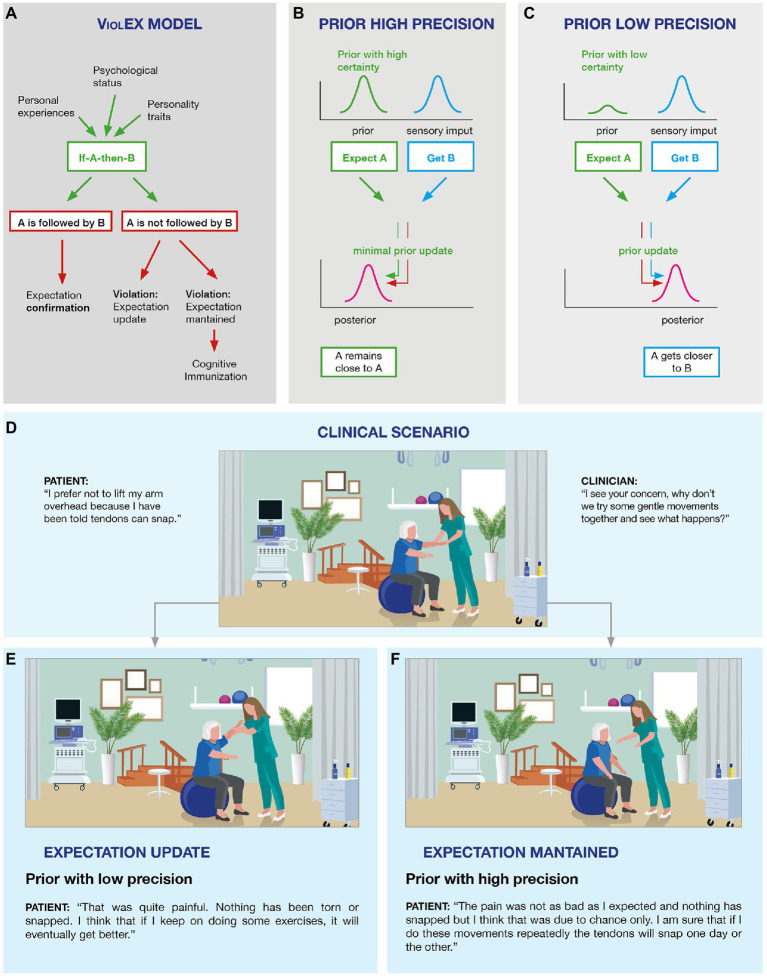Figure 1.
The ViolEx Model and the Bayesian Brain: from theory to clinical practice in musculoskeletal (MSK) pain. The ViolEx Model (A) and the Bayesian brain (B,C). Image (A) is a schematization of the ViolEx Model showing different outcomes depending on whether the violation of expectations is followed by immunization or change, resulting in either expectations maintenance or expectations updating, respectively. Image (B) is an example in which a prior with a high level of certainty is considered reliable and therefore undergoes minimal updating, while the interpretation of the sensory data is shifted toward the prior, resulting in a biased percept. Image (C) is an example in which a prior with a low level of certainty is updated to better fit sensory data, resulting in a posterior which is a better proxy of the sensory information. Examples of clinical scenarios (D–F). Image (D) shows a typical clinical situation in which the clinician asks the patient with MSK pain to perform a basic exercise (lift the arm), while the patient is reluctant to do it due to their negative expectations (i.e., pain/injury). The patient finally agrees and lifts the arm, without facing negative consequences. Such situation may result in two different outcomes: in (E) the positive experience associated with the exercise leads to the violation of the patient’s negative expectation with an update (low prior); whereas in (F) the positive experience associated with the exercise is not sufficient to violate the patient’s negative expectation, thus maintaining the previous experience (high prior).

